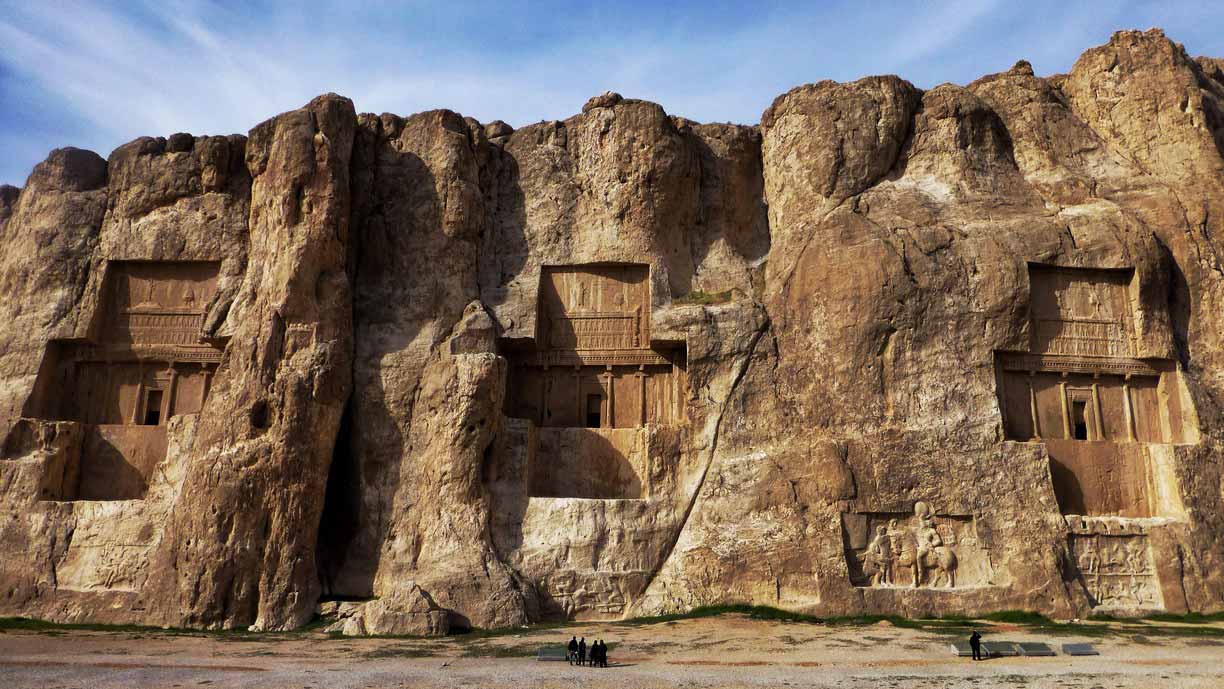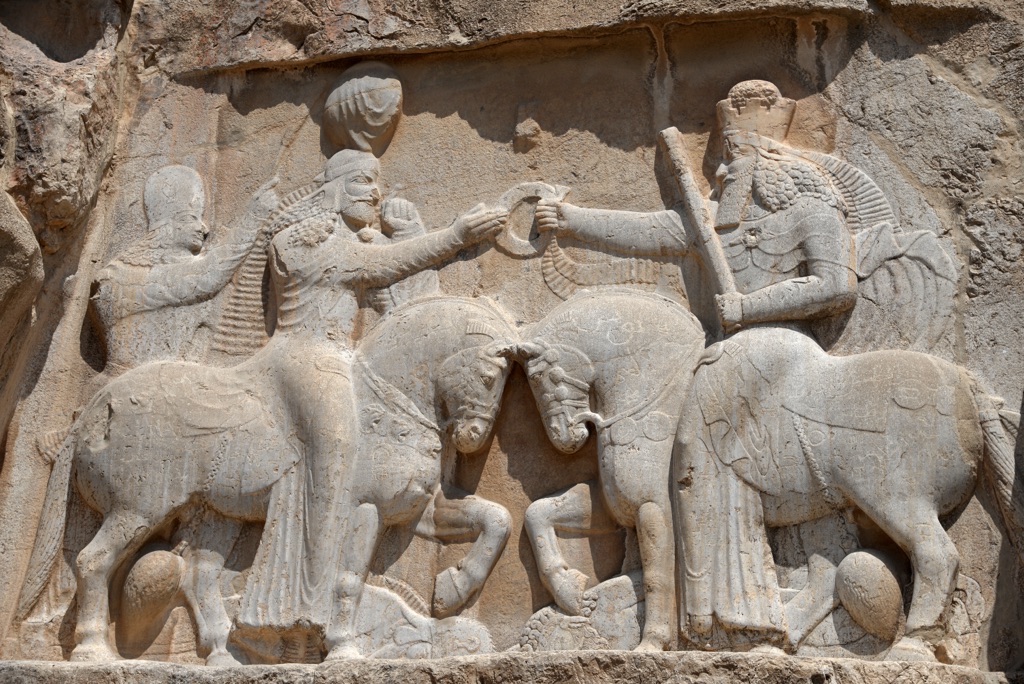Naqsh-e Rostam, located in Iran’s southwest, is a remarkable historical landmark that connects the modern world to ancient civilizations. Serving as the royal necropolis of the Achaemenid Empire, this archaeological site is often overshadowed by its more renowned counterpart, Persepolis. Carved into the face of the mountain, Naqsh-e Rostam is adorned with ancient Iranian rock reliefs and serves as the final resting place of four Achaemenid kings, including the notable King Darius the Great and his son, Xerxes. This site holds immense significance in Iranian history, housing various archaeological sites that span over a millennium, from the Elamites and Achaemenids to the Sassanids.
A Brief Overview of the Achaemenid Dynasty

To truly grasp the significance of Naqsh-e Rostam, it is essential to delve into the origins of the Achaemenid Empire. Founded by Cyrus the Great in the 6th century BCE, this dynasty marked the birth of the first grand Persian Empire. At its zenith, the Achaemenid Empire stretched across three continents, from the western boundaries of Egypt to the Indus Valley in the east. The Fars province, situated in present-day Iran, flourished as the heartland of the empire and witnessed the construction of several monumental structures, among which Naqsh-e Rostam stands as a shining example.
The Tombs of Kings
One of the most captivating features of Naqsh-e Rostam is the presence of four monumental tombs intricately carved into the rocky cliffs. These tombs, positioned at a significant elevation above the ground, serve as the final resting place for Achaemenid kings. While the exact identification of each tomb remains a subject of debate, most scholars agree that they belong to Darius I, Xerxes I, Artaxerxes I, and Darius II.

Each tomb facade features a distinctive design, with the figure of the king standing atop a platform symbolizing the cosmic world. The king is depicted paying homage to a divine figure, possibly Ahura Mazda, emphasizing the divine mandate claimed by the Achaemenid kings. The tomb facades also showcase large panels above the entryway, each containing similar content, including figurines of the king receiving investiture from a god, rows of smaller figures bearing tribute, and depictions of troops and officials.
These tombs are primarily adorned with architectural decorations, with clear distinctions in size among the three types of figures. Each tomb has a central entrance that leads to a small chamber where the king was laid to rest in a sarcophagus. Notably, Sassanian rock reliefs featuring prominent figures, both engaged in battle and praising gods, are positioned at a lower level, further highlighting the Sassanid Empire’s association with the grandeur of the preceding Achaemenid Empire. One renowned relief portrays the Roman Emperor Valerian kneeling before Sassanian King Shapur I on horseback, signifying the Battle of Edessa in 260 AD and the enduring impact it had on the Romans.
The Cube of Zoroaster

An additional captivating structure within Naqsh-e Rostam is the Cube of Zoroaster, a square tower dating back to the 5th century BCE. Despite its enigmatic purpose, scholars have proposed various theories, suggesting that it may have served as a tomb, a repository for sacred objects, or even an unconventional fire temple.
Sassanian Reliefs

While Naqsh-e Rostam is primarily renowned for its Achaemenid connections, it also showcases significant influences from the Sassanian dynasty. The Sassanians, another prominent Persian dynasty, left their imprint through a series of rock reliefs. These carvings depict scenes of victories and triumphs by various Sassanian kings, reflecting a tradition of commemorating and immortalizing royal achievements in stone.
Darius Inscription

One of the most notable features of Darius I’s tomb at Naqsh-e Rostam is the inscription on its upper left corner, commonly referred to as the “DNa inscription.” This inscription, dating back to around 490 BCE, details Darius I’s conquests and accomplishments throughout his reign. It highlights the vast extent of the Achaemenid Empire, which encompassed territories as far as Gandhara and the Indus Valley, Thrace and Macedonia, Egypt, Babylon and Assyria, and beyond.
Naqsh-e Rostam stands as a testament to the grandeur and rich cultural heritage of ancient Iran. As a royal necropolis for the Achaemenid kings, it offers a glimpse into a bygone era when the empire pushed the boundaries of the known world. Exploring this site is a journey back in time, where echoes of historic rituals, regal pronouncements, and the legends of mighty monarchs and their final resting placescan still be felt.
Naqsh-e Rostam’s rock reliefs, monumental tombs, and the Cube of Zoroaster provide a captivating window into the art, architecture, and beliefs of the Achaemenid and Sassanian civilizations. As visitors stand before these ancient marvels, they bear witness to the enduring legacy of the Persian Empire and the profound impact it had on the region’s history. Naqsh-e Rostam serves as a reminder of the remarkable achievements of the past and a testament to the importance of preserving and appreciating our shared cultural heritage.

